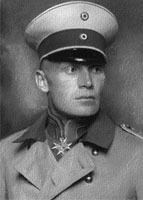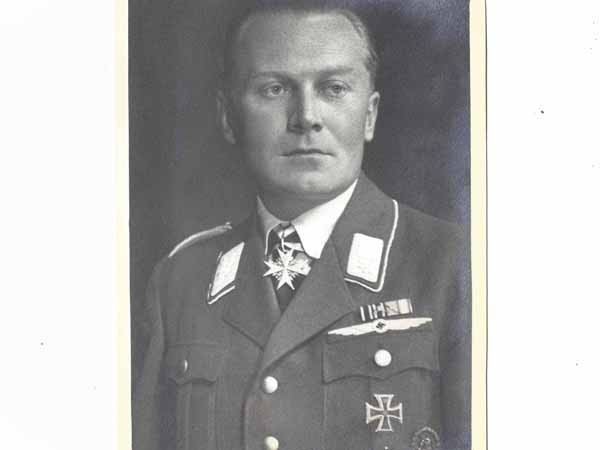Allegiance Germany Commands held Jagdstaffel 2 Education University of Oxford | Name Karl Bolle Years of service 1913–1918 | |
 | ||
Born June 20, 1893
Berlin, Germany ( 1893-06-20 ) Rank Rittmeister (Cavalry Captain) Awards Pour le Merite, Royal House Order of Hohenzollern, Military Merit Cross, Friedrich Order, Iron Cross Other work Helped covertly train pilots for secret founding of Luftwaffe. Died October 9, 1955, Berlin, Germany Service/branch United States Army Air Service | ||
Double cut on double tatami roll karl bolle ckdf
Rittmeister Karl Bolle, (20 June 1893 – 9 October 1955), Pour le Merite, Military Merit Cross, Royal House Order of Hohenzollern, Friedrich Order, Iron Cross was a fighter ace with 36 aerial victories during World War I. He became a Jagdstaffel commander during that war, and an advisor to the Luftwaffe during World War II.
Contents
- Double cut on double tatami roll karl bolle ckdf
- Lauren hanson vs karl bolle
- Life before flying
- Aerial service in World War I
- Bolle in command
- Post World War I
- Honors and awards
- References

Lauren hanson vs karl bolle
Life before flying
Karl Bolle was born in Berlin on 20 June 1893, to a family owning a well-known dairy. He studied economics at The University of Oxford in 1912, and was also well known for his athletic prowess, playing ice hockey while there.
He returned home to Germany to enlist as a leutnant (lieutenant) in the 7th (Magdeburg) Cuirassiers "von Seydlitz" Regiment in 1913 as a one-year volunteer. At the start of World War I his regiment served on the Western Front, fighting in Belgium and the First Battle of the Marne. It was then transferred to the Eastern Front; Bolle seeing action in Poland and in Courland in Latvia. By the end of 1915, Bolle had won an award for bravery, the Iron Cross, Second Class and transferred to the Luftstreitkräfte.
Aerial service in World War I
He undertook his initial training at Johannistal, then was forwarded to FEA 5 in Hannover, Germany. Later he trained to become a fighter pilot at Valenciennes, France at Jastaschule I. The standard German practice was to be trained initially at a Fliegerschule or an FEA (Flieger-Ersatz Abteilung = Pilot Replacement Unit) and serve initially in a two-seater unit, in this case Kagohl IV, and then later transfer for training as a fighter pilot at a Jastaschule where they would be closely tutored by experts with frontline experience. They also had access to captured British and French fighters to familiarize themselves with their opponent's aircraft.
At any rate, upon completion, he was assigned to the bombing group Kagohl IV in July, 1916.
Bolle was wounded in October, 1916 in combat with five French fighters. He crash landed within friendly lines and despite his own injury dragged his injured observer safely out of the shell-fire directed at their downed aircraft.
Upon his recovery, he had been assigned to Kampfstaffel 23 of KG IV; Lothar von Richthofen was assigned as his observer/gunner. It was about this time that Bolle was awarded the Kingdom of Württemberg's 2nd Class Knight's Cross of the Friedrich Order. He was the only fighter ace to win this award.
Bolle went to Jastaschule (fighter pilot's training) in early 1917. He joined Jagdstaffel 28 in April 1917, while still recuperating from a leg wound. While assigned as a non-flying adjutant, he began tutelage on the fighter pilot's craft with two aces, Karl Emil Schaefer and Otto Hartmann, as well as Bolle's friend, Max Ritter von Müller.
In July he commenced operational flying with Jasta 28. His first victory was over an Airco DH.4 of 57 Squadron on 8 August 1917. He scored once more in August and victories in December 1917 and January 1918 made him an ace by 30 January.
Bolle in command
He was then promoted to Oberleutnant and transferred to command Jasta 2 on 20 February 1918 at Marcke, France. This was the squadron that Oswald Boelcke had commanded as he invented the first fighter tactics, strategy, and organization. It was being re-equipped with Fokker Dr.I triplanes as it was being incorporated into Jagdgeschwader 3. It was a dispirited squadron, having lost three consecutive Pour le Merite holding commanding officers killed in action. Bolle was destined to be Jasta 2's final commander.
Despite seemingly modest credentials, Bolle set his mark upon the squadron. The Fokker Dr.I triplane supplied was a plane of limited speed but great maneuverability and climb rate. Its slower speed made it more difficult to close to short distance for gunnery against faster fighters. Bolle's solution was the use of an Oigee telescopic sight for his guns. He also painted distinctive white stripes on his upper wings, to denote his leadership role, along with a yellow fuselage band edged by black and white to honor his old cavalry regiment.
Bolle's command of English turned out to be handy upon occasion, when he questioned downed British Empire fliers.
He opened his tally with Jasta 2 on 25 April 1918, as part of a huge air offensive launched to support ground assault on Kemmel Ridge. He then began a steady collection of single and double victories, with five in May, seven in June, nine in July, and three in August. In August, 1918, when he had scored 28 victories, he received the Military Merit Cross, and the Royal House Order of Hohenzollern; the Pour le Merite (commonly known as the Blue Max) was bestowed on the 28th.
Bolle did not score again until 1 November. On 4 November, he downed four British fighters. —two RAF SE.5as of 56 Squadron and two Sopwith Snipes of 4 AFC. The Snipes (claimed with Leut.Ernst Bormann) were flown by aces Captain Thomas Baker (12 victories) and Lt. A. J. Palliser (7). These were Bolle's final victories.
A week later, he and his pilots defiantly marked their Fokker D.VIIs with their names and victory scores before surrendering them into British hands at Nivelles, Belgium.
Bolle's final score of 36 victories included a preponderance of wins over enemy fighters; he downed 25. The other 11 victories were two-seater reconnaissance, ground attack, and bomber aircraft. More importantly, he led Jasta 2 through the intense battles of 1918 to the second highest victory total in the German Air Force, with a total of 336 victories to the Jasta.
Post World War I
After war's end, he became a flying instructor. He also became the Director of the Deutsche Verkehrsfliegerschule (German Air Transport School) in the 1920s. Subsequently, he helped in the covert training of pilots for the Luftwaffe.
During World War II, he served as an advisor with the Luftwaffe, reporting to Hermann Göring.
Karl Bolle died in his native city of Berlin on 9 October 1955.
